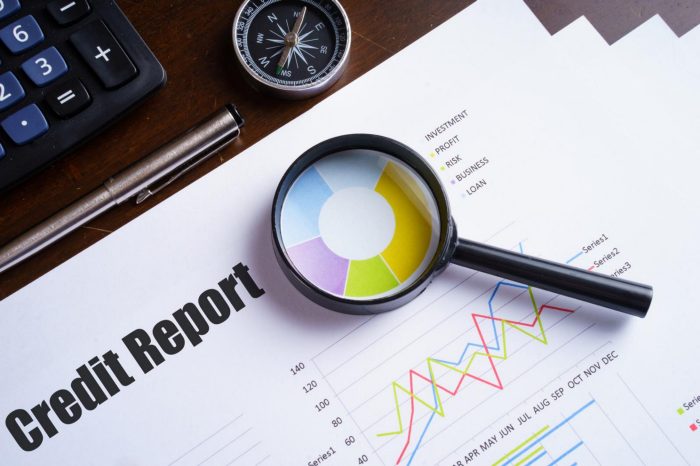Table of Contents
Buying a Home When You’ve Declared Bankruptcy in the Past
Few financial decisions carry as much negative weight as bankruptcy. Those who file for bankruptcy status can be set back by the potential property loss and bankruptcy’s effect on their credit report. Since credit directly affects mortgage qualification, you might be wondering how difficult is it to receive a mortgage when you’ve declared bankruptcy in the past. Buying a home when you’ve declared bankruptcy in the past might be easier than you expect, and if you plan to or already have declared bankruptcy, there is still hope for your financial future.
What is Bankruptcy?
First, let’s do a quick review of what bankruptcy is. Bankruptcy is a way to give a fresh start to those with uncontrollable debt while still being fair to the creditors that the debts are owed to. Filing for bankruptcy places an automatic stay on most of your debts. An automatic stay is a court order that remains in effect for the duration of the bankruptcy process that prohibits creditors from taking action to collect debts owed to them. When you file for bankruptcy, a trustee is appointed to review your bankruptcy case with you and handle legal duties such as negotiations and liquidation on your behalf.
Types of Bankruptcy
There are several different types of bankruptcies that people can file for, but two of them are the most common among individuals. The most common bankruptcy type is a Chapter 7 bankruptcy, which is where the trustee will liquidate (seize and sell) the filer’s assets such as cars, property, and collectibles to pay off creditors. The process usually takes 3 to 6 months to complete and the filer is no longer responsible for most of their debts once the discharge is granted. The filer may still be responsible for some of their secured debts if they reaffirm the debt with their creditor.
The second most common type of bankruptcy is Chapter 13. People file for Chapter 13 bankruptcy when their income is too high for them to be eligible for Chapter 7 bankruptcy or when they want to file for bankruptcy while avoiding home foreclosure. Instead of liquidating assets like Chapter 7, the trustee in a Chapter 13 case will come up with a 3 to 5 year repayment plan for the filer to pay off their creditors. The bankruptcy is discharged once the repayment period ends and the filer is no longer liable for the debts that were relieved.
Now that we know the two key types of bankruptcies, let’s see how bankruptcy affects mortgage eligibility.
Getting a Mortgage After a Bankruptcy

Getting a mortgage after bankruptcy may seem like a fantasy, but it’s not as much of an impossibility as most would think. Many loan programs have mandatory waiting periods for those who have filed for bankruptcy. These wait periods are intended to allow potential borrowers to rebuild their assets and credit. A lender will want to see that you are serious about rebuilding your financial future, so refrain from racking up tons of new debt and make wise decisions when rebuilding your financial picture during your waiting period. One important action would be establishing a new emergency fund and savings account. If a potential borrower can show that they filed for bankruptcy as a result of “extenuating circumstances” such as natural disasters, divorce, illness/death of household’s primary earner, or being laid off, their waiting period can be reduced.
There are unique loan programs available that may allow borrowers to obtain a new mortgage only one (1) day after bankruptcy. This program will still require a full loan approval from an underwriter and funds for a down payment (gift funds for a down payment is ok), but it is a great option for those who do not want to go through the common waiting period outlined below.
See below for the waiting periods for common loan programs. The waiting periods are based on the discharge date, dismissal date, or the beginning of a Chapter 13 payout period.
Fannie Mae (conventional)
Chapter 13: 4 years from discharge date
Chapter 7: 2 years from discharge date; 4 years from dismissal date
FHA
Chapter 13: 2 years from discharge date
Chapter 7: 1 year from payout period with written permission from the court and borrower proof of satisfactory bankruptcy payment
VA
Chapter 13: 2 years from discharge date
Chapter 7: 1 year from payout period with written permission from the court and borrower proof of satisfactory bankruptcy payment
USDA
Chapter 13: 3 years from discharge date
Chapter 7: 1 year from payout period with written permission from the court and borrower proof of satisfactory bankruptcy payment
Rebuilding Credit After Bankruptcy

Waiting periods aside, rebuilding credit is the largest hurdle for filers to overcome in order to get a mortgage. A bankruptcy can cause a credit score to plummet by more than 200 points, with lower credit scores being less impacted than higher credit scores. Rebuilding credit not only makes it more likely for a potential borrower to qualify for a loan, but it can also help them get a more competitive interest rate if they get their score up to a healthy level.
The first step in improving credit is reviewing a full credit report from all three bureaus. Each of the three main credit bureaus (Equifax, Experian, and Transunion) are required to give you a free credit report every 12 months. To access your free credit reports, submit a request at www.annualcreditreport.com. Be prepared to provide your name, your home address(es) from the past 2 years, Social Security Number, and date of birth. Review your credit report to ensure that the bankruptcy is being reported accurately.
In order to improve your credit score, here are a few credit Dos and Don’ts that you can use to improve your credit. For more information on how to improve your credit, visit our credit improvement guide here.
Credit DOs
- Make payments on time
- Monitor your credit score
- Keep some credit lines open
- Close store cards
- Open a credit card if you don’t already have one
- Limit credit card use
- Set up automatic alerts for credit cards
- Set up automatic payments
Credit DON’Ts
- Close accounts before applying for a loan
- Close your oldest credit cards
- Open multiple cards at the same time
- Pay below your minimums on credit cards
- Transfer a balance to an account with a lower limit
- Neglect any kind of bill
- Procrastinate
- Make late payments
In addition to rebuilding your credit, you should also create a budget that adds to your savings on a monthly basis for your down payment. This also shows that you can hold onto your money (also known as “seasoning assets”) which tells lenders that you are a reliable borrower and improves your likelihood of eligibility. In order to find out what a realistic down payment goal would look like, take some time to learn about closing costs and common loan programs.
Don’t Lose Hope!

When you feel like you are ready to apply for a mortgage, be prepared with physical and digital copies of your records. This includes bank, credit card, and loan statements, investments like bonds, retirement accounts, and stocks, tax records, insurance documents, your bankruptcy petition, employment records, marriage and/or divorce records, medical bills, and anything else that you think your lender will need to know about to understand your financial situation.
If you’re interested in finding out which loan programs you qualify for, please contact us and we can review your financial situation and determine your eligibility. We are also available to help answer any questions you may have.
Financing details are for educational purposes only. Rates, program terms, fees, and conditions referenced are subject to change without notice. Not all products are available in all states for all amounts. All mortgage applications are subject to underwriting guidelines and approval. This is not an offer of credit or a commitment to lend. Residential Wholesale Mortgage, Inc. dba RWM Home Loans is an equal housing lender licensed by the CA Department of Real Estate #01174642 and CA Department of Financial Protection and Innovation under the California Residential Mortgage Lending Act. NMLS# 79445



